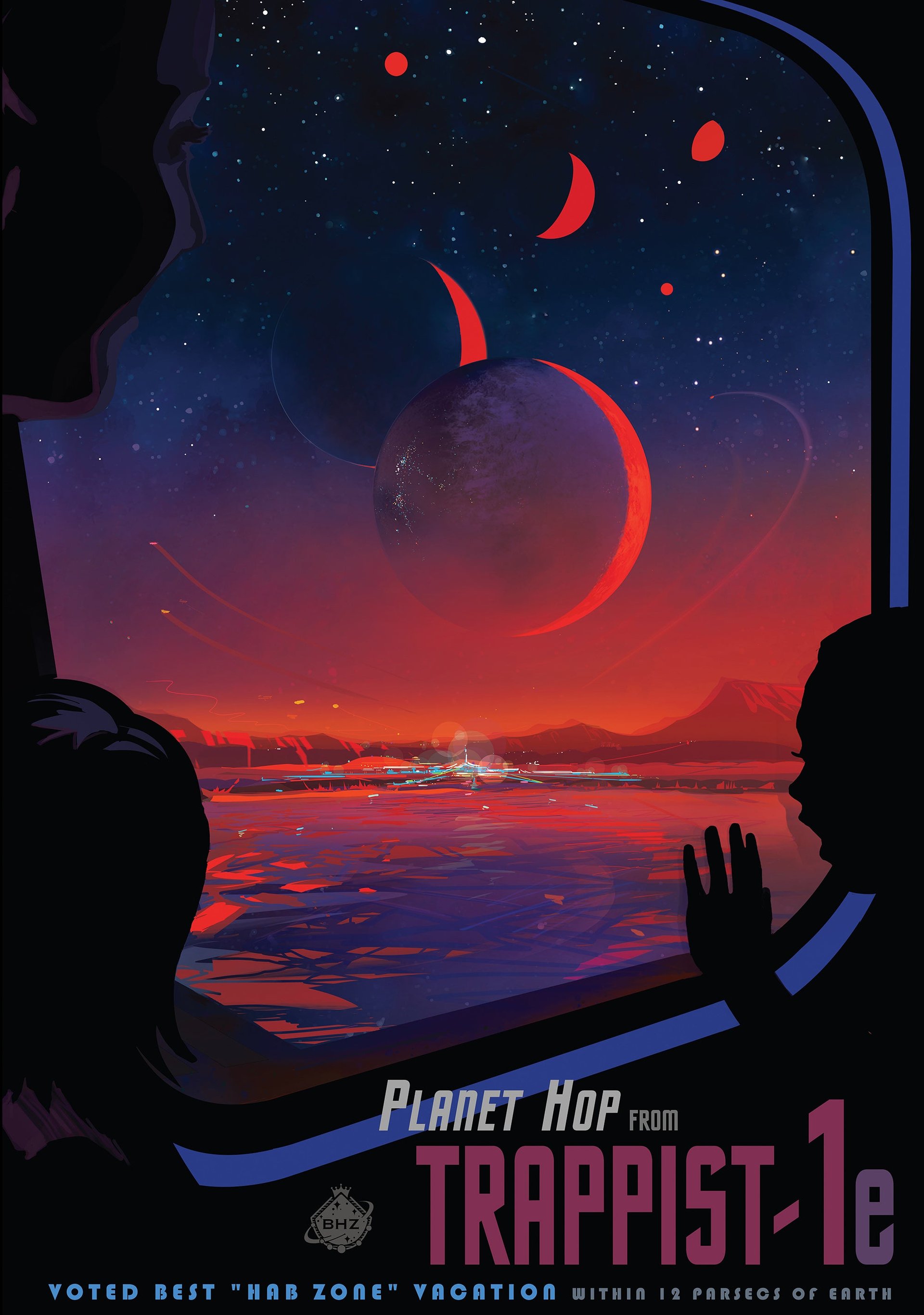What life would be like on the seven newly discovered Earth-like planets
We’ve found a new solar system, and it threatens to put our own to shame. The star Trappist-1, a mere 39 light years away, has been found to host seven Earth-sized, rocky planets.


We’ve found a new solar system, and it threatens to put our own to shame. The star Trappist-1, a mere 39 light years away, has been found to host seven Earth-sized, rocky planets.
The discovery has astronomers, alien-hunters, and space enthusiasts abuzz for a good few reasons. Among new solar systems discovered so far, none have had more than seven planets (our system has eight). And none have had all seven that were rocky and also Earth-sized.
What’s more, because the star type is among the most common in our galaxy, such solar systems are likely to be quite common. That makes the Trappist-1 system a prime target to accelerate the search for life beyond our own solar system.
Strange and familiar

Even though our sun is a much larger star than Trappist-1, our planets are so far apart that their conditions range from the scorching hot world of Mercury to the bitter icy gases of Uranus. Instead, planets Trappist-1b to Trappist-1h are nestled together cosily around an “ultracool” dwarf star, and that means each likely has temperate conditions and thus possibly liquid water in some regions.
Humans have been struggling to land on Mars. Instead, if intelligent aliens live on any one of Trappist-1 planets (and you bet scientists are already searching), flying from one to another would be a quick jaunt, relatively speaking. “It’s both easy and tempting to envision a multi-world empire arising in this star system, a small federation of planets in our cosmic backyard,” writes Seth Shostak, director of the SETI Institute.
Our planets have beautiful moons, including Jupiter’s gorgeous Europa and furious Io. We don’t know if any of Trappist-1’s planets have moons, but they likely don’t need them for the view. On the third rock from the dim star, the second rock would look twice the size our moon looks to Earthlings and the remaining planets could line up to create a view that even science-fiction authors haven’t imagined. “The spectacle would be beautiful,” says Amaury Triaud of the University of Cambridge, who is a part of the team that discovered the exoplanets.
To be sure, humans would need special goggles to see this spectacle. Most of the light coming from dwarf stars like the one in the newly discovered solar system is in the infrared spectrum. Our eyes can’t see infrared light, so the world would appear mostly dark to us, including black plant leaves if there are photosynthesizing organisms. Of course, one could imagine that alien life may have evolved to see in the infrared, like snakes have on Earth.
Dark and stormy
But Trappistian life won’t be smooth sailing. All of Trappist-1’s planets are likely tidally locked, which means, just as only one side of the moon faces the Earth, all seven Earth-sized planets have one face permanently facing its star and the other plunged in perpetual darkness. The planets are rotating, but in a co-ordinated manner so slow that one face of the planet remains locked toward the star. The implications of tidal locking for life on such planets are huge.
One side would easily heat up to the boiling point of water, and the other would likely be well below freezing. The atmosphere, which we assume is present because life would not exist otherwise, would enable some heat to move from one side to the other. But that would happen through planet-wide hurricanes that may be far worse than category-5 hurricanes that ravage the Earth.
There would be no day-night cycle on these planets. Complex life on Earth crucially depends on the circadian rhythm that’s controlled by the light-dark daily cycle. Trappistians likely won’t have seasons either. If any of these planets have tilted axes, living beings on them woud likely experience some variation in light but nothing like spring or autumn.
Somehow, however, if life finds a way of existing in the twilight zone—between the hot side and the cold side—it will have other problems. Ultra-cool dwarf stars are fickle. Some times Trappist-1 could dim by as much as 40% for months at a time. At other times, the star can frequently flare up causing devastating solar storms where the star throws out massive amounts of charged particles. All this could cause major problem for Trappistians, who will likely be forced to become underground and underwater dwellers.
And, yet, if we’ve understood one thing from all our study of biology on Earth, it is that life is hardy. So life could’ve evolved and remarkable Trappistians may be real. The only bad news then is that the conditions on their planets don’t seem very favorable to terrestrial life. Too bad for Earthlings who’ve been seeking an escape.